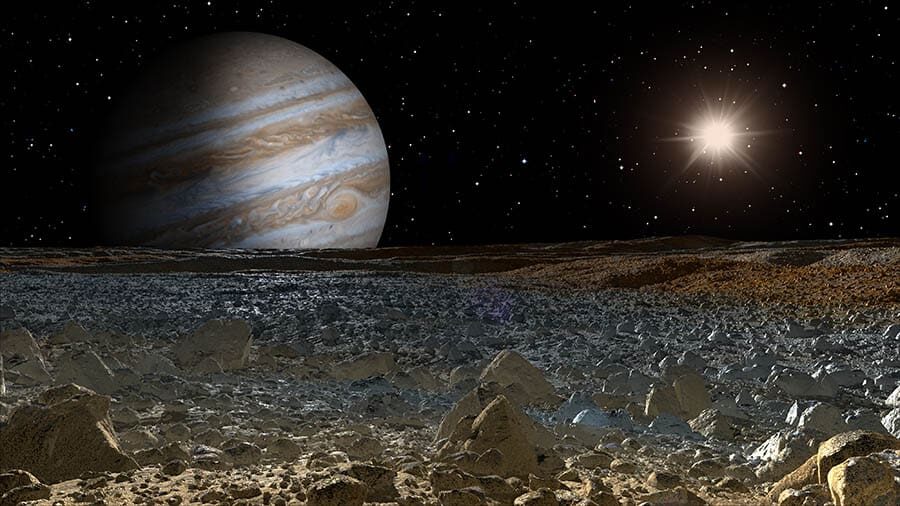13 Europa Moon Facts | New Facts about Europa
If you’re learning about Jupiter, then you’re often going to come across it’s moons. But with so many of them, it can be difficult to know where to start! Europa is known as one of the four Galilean moons of Jupiter – it is the smallest of them but it’s still quite a sizeable moon. Let’s have a look at some facts about Europa.

- Very recently, astronomers have come out and said that Europa could potentially have life on it. No astronomical object aside from Earth has been proven to have this.
- Europa has a diameter of 1,940 miles (3,100 kilometers).
- It is one of four Galilean moons, all discovered by Galileo Galilei. The other moons are Ganymede, Io and Callisto.
- It is the smallest of the four Galilean moons. However, it is still bigger than the dwarf planet, Pluto.
- It takes it’s name from the mother of King Minos in Greek mythology. Europa was one of Zeus’s several lovers, which is where all the Galilean moons get their name from.
- Europa is known for it’s very smooth surface. In fact, it has the smoothest surface of any moon, or even object, in our solar system.
- The smooth surface of Europa is covered with water ice, which makes it very reflective of the sun’s light.
- Even though the surface of Europa is smooth, it still has it’s fair share of craters. The largest crater on Europa is called Aine, and it has a 5km diameter.
- Inside of Europa, it has an iron core in the center, just like Earth. More interestingly however, it actually has an ocean underneath the surface! This is likely a mix of liquid water and slushy, ice water.
- The average temperature at the equator of Europa is approximately -160°c. However, at the North and South pole of this moon, temperatures are regularly below -200°c.
- Unlike most other moons, Europa has a thin atmosphere, which is primarily made up of Oxygen.
- The first photos that we have of Europa come from the early 70’s Pioneer 10 and 11 space missions.
- The distance from Europa to Earth is approximately 628 million km. This would take 3 years to make it there with an unmanned spacecraft, and 6 years with a manned one.
In the last few decades, Europa has been commonly talked about amongst astronomers as having the potential to maintain life. The fact that Europa potentially has an ocean of water underneath it’s surface is one of the main reasons why people think it is possible for humans to survive on this moon. However, there are still some obstacles that stand in our way, like the freezing cold temperatures!
Yes, contrary to what many people might think, Europa does actually have an atmosphere. It is made up of primarily oxygen, which is another one of the reasons why astronomers think that it might make a suitable habitat for humans.
Like most moons, it isn’t easy to know exactly what Europa is made of. Much of what we think about these distant moons and planets is theoretical. So, we think that Europa has an iron core, surrounded by a mantle made of rock. Then outside of this is an ocean of saltwater, likely a mix of both liquid and ice due to the temperature. Europa’s crust is glazed in ice, too.
Yes, NASA does plan to send a spacecraft to the moon Europa in the next few years. Their mission Europa Clipper is set to depart in the year 2024. They plan to monitor the cold surface of the planet and find out what they can about it’s composition.
NASA do not plan to land of Europa as part of the Europa Clipper mission. However, there is a proposed mission to go alongside the Clipper called the Europa Lander mission. If accepted, this would be launched the years after in 2025.
All in all, this moon is unique in many ways. It’s the smoothest moon out of all of them, and for a few different reasons, it’s thought of as somewhere where humans may be able to survive. Hopefully you’ve learned something new in these facts about the moon Europa!